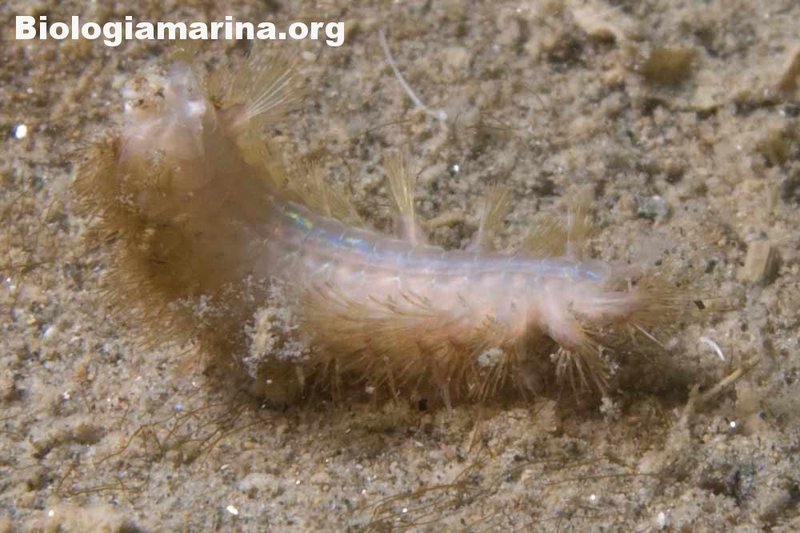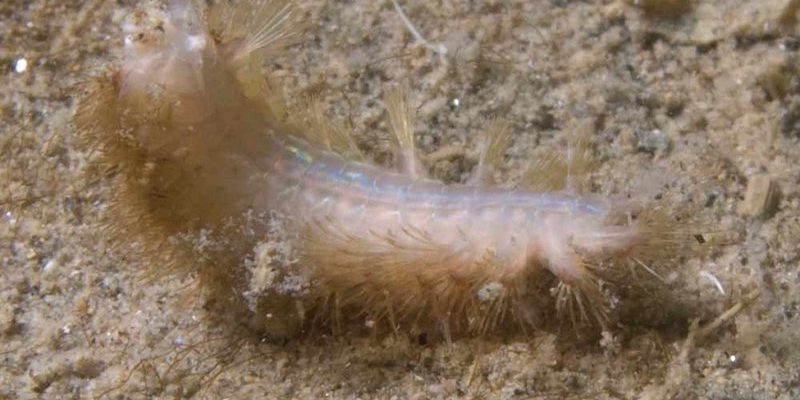
So, what exactly is the Aphrodite aculeata? This marine worm, with its feathery appendages and segmented body, thrives in ocean environments but also finds a home in coastal soil. Their presence is vital for nutrient cycling and soil aeration, much like stirring a pot helps mix the ingredients for a delicious soup. If you’re curious about how this little worm contributes to the health of our environments, let’s dive deeper!
What Is Aphrodite Aculeata?
Aphrodite aculeata is a type of *polychaete* worm, part of the family Aphroditidae. These worms are typically found in sandy or muddy environments, often burrowing into the substrate. Their outer layer is decorated with bristles, which give them their name and help them move through their habitats. This can be likened to a fluffy winter coat that keeps you comfortable as you navigate through the cold.
What makes Aphrodite aculeata special is how it interacts with the environment. These worms aren’t just passive residents; they actively contribute to their surroundings in several ways. For instance, they feed on organic matter, which plays a vital role in breaking down decomposing materials, thereby releasing nutrients back into the ecosystem. This is similar to how composting works in your garden—transforming waste into something rich and beneficial.
Role in Soil Ecosystems
In soil ecosystems, Aphrodite aculeata serves multiple functions that promote soil health and fertility. First off, these worms aerate the soil as they burrow, creating tiny tunnels. This process allows air and water to penetrate deeper, which is essential for plants’ roots to access the nutrients they need. Think of it like giving a plant a refreshing drink after a long, hot day.
Moreover, Aphrodite aculeata helps decompose organic matter. As they feast on dead plant material, they break it down into simpler substances that are easier for other organisms to use. This process not only enriches the soil but also supports a diverse community of microorganisms that are crucial for plant growth.
Lastly, by stabilizing the soil structure, these worms prevent erosion. When you consider that healthy soil is fundamental for agriculture and natural vegetation, it becomes clear just how vital Aphrodite aculeata is to maintaining our ecosystems.
Roles in Aquatic Ecosystems
In aquatic environments, Aphrodite aculeata holds a significant place as well. These worms contribute to the overall health of marine ecosystems in several ways. For starters, they are excellent at processing detritus—the dead organic material found in oceans and other water bodies. By consuming this material, they help recycle nutrients, making them available for other marine life, like fish and corals. It’s a bit like how a clean-up crew makes sure that a party venue is in tip-top shape for the next event.
Furthermore, they serve as food for numerous marine creatures, from fish to crustaceans. In this sense, Aphrodite aculeata fits snugly into the food web, illustrating how interconnected everything is in nature. If one link falters, the whole system can be affected.
Another aspect to consider is their role in sediment turnover. As these worms burrow, they help move sediment around, which is crucial for maintaining balanced ecosystems, especially in coastal areas. Imagine stirring a pot of soup; the ingredients need to mix well for the flavors to blend perfectly. Similarly, sediment turnover ensures that nutrients are evenly distributed throughout the habitat.
Importance of Biodiversity
Biodiversity, or the variety of life in a particular habitat, is essential for the health of any ecosystem. Aphrodite aculeata contributes to this richness by providing a habitat for other organisms. Their burrows offer shelter for tiny sea creatures, and the nutrients they release during feeding support various forms of life.
You might be wondering why biodiversity matters. Simply put, diverse ecosystems are more resilient. They can better withstand environmental changes like pollution, climate shifts, or habitat loss. The presence of Aphrodite aculeata and other organisms strengthens the ecosystem’s ability to bounce back from disturbances, just like a diverse group of friends can tackle challenges together more effectively than a group of similar individuals.
Additionally, healthy ecosystems provide essential services, such as clean water, food, and climate regulation. Without creatures like Aphrodite aculeata, many of these services would be compromised, affecting both the environment and human life.
Threats to Aphrodite Aculeata
Despite their importance, Aphrodite aculeata faces various threats that could impact its population and, consequently, the ecosystems it helps support. One of the main threats is pollution. Chemicals and waste from agriculture and urban areas can contaminate their habitats, reducing their numbers and impairing their ability to perform essential functions.
Climate change is another significant concern. Rising ocean temperatures and acidification can disrupt their habitats and breeding patterns. Remember, just like us, these creatures need a stable environment to thrive. It’s like trying to enjoy a swim in a pool that’s too hot or too cold; it’s uncomfortable and can be harmful.
Habitat destruction, especially in coastal areas, also poses a risk. When we modify shorelines for development or agriculture, we damage the delicate balance of these ecosystems. Protecting environments where Aphrodite aculeata lives is crucial for preserving their populations and the overall health of ecosystems.
Conservation Efforts
To help safeguard Aphrodite aculeata and its role in ecosystems, various conservation efforts are underway. Restoration projects aim to rehabilitate coastal and marine habitats to support the diverse life within them. These can include planting native vegetation to stabilize shorelines and reduce pollution runoff.
Additionally, raising awareness about the importance of biodiversity is essential. Educational programs and community outreach initiatives can empower individuals to take action, whether that’s reducing plastic use or participating in beach clean-ups. Every small effort contributes to the larger goal of preserving our ecosystems.
Supporting sustainable practices is also key. By choosing eco-friendly products and supporting legislation aimed at protecting coastal and marine environments, we can help create a healthier future for Aphrodite aculeata and other vital organisms.
In summary, Aphrodite aculeata is far more than just a fascinating marine worm; it’s an essential player in both soil and aquatic ecosystems. By aerating soil, recycling nutrients, and supporting biodiversity, these little creatures help maintain the balance of nature. Just as friends help each other, Aphrodite aculeata supports a network of life that we all depend on.
As we continue to learn about and protect our ecosystems, recognizing the importance of every creature—no matter how small—is essential. So, next time you think about the health of our environment, remember the role of Aphrodite aculeata and the myriad ways it contributes to the world around us!

